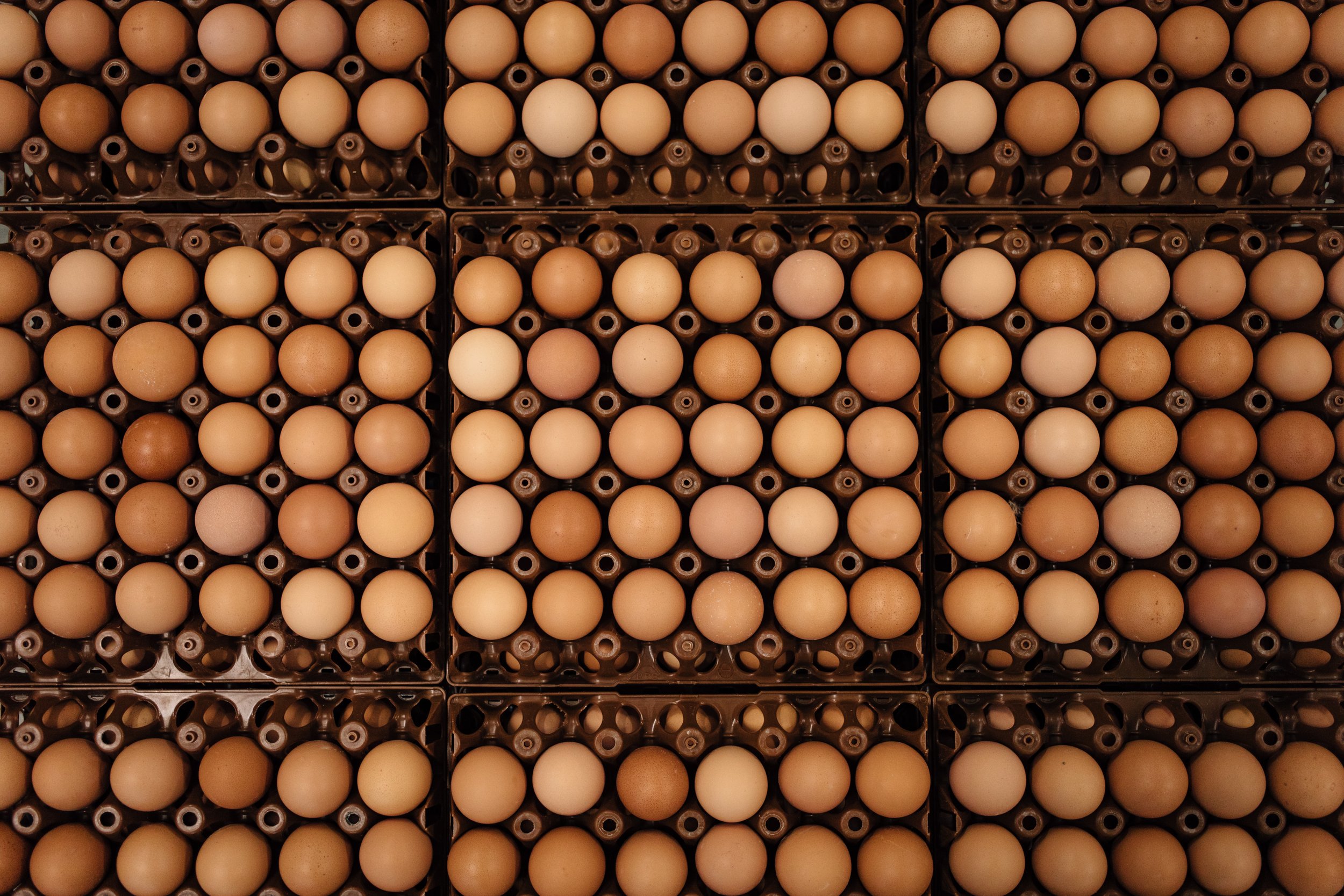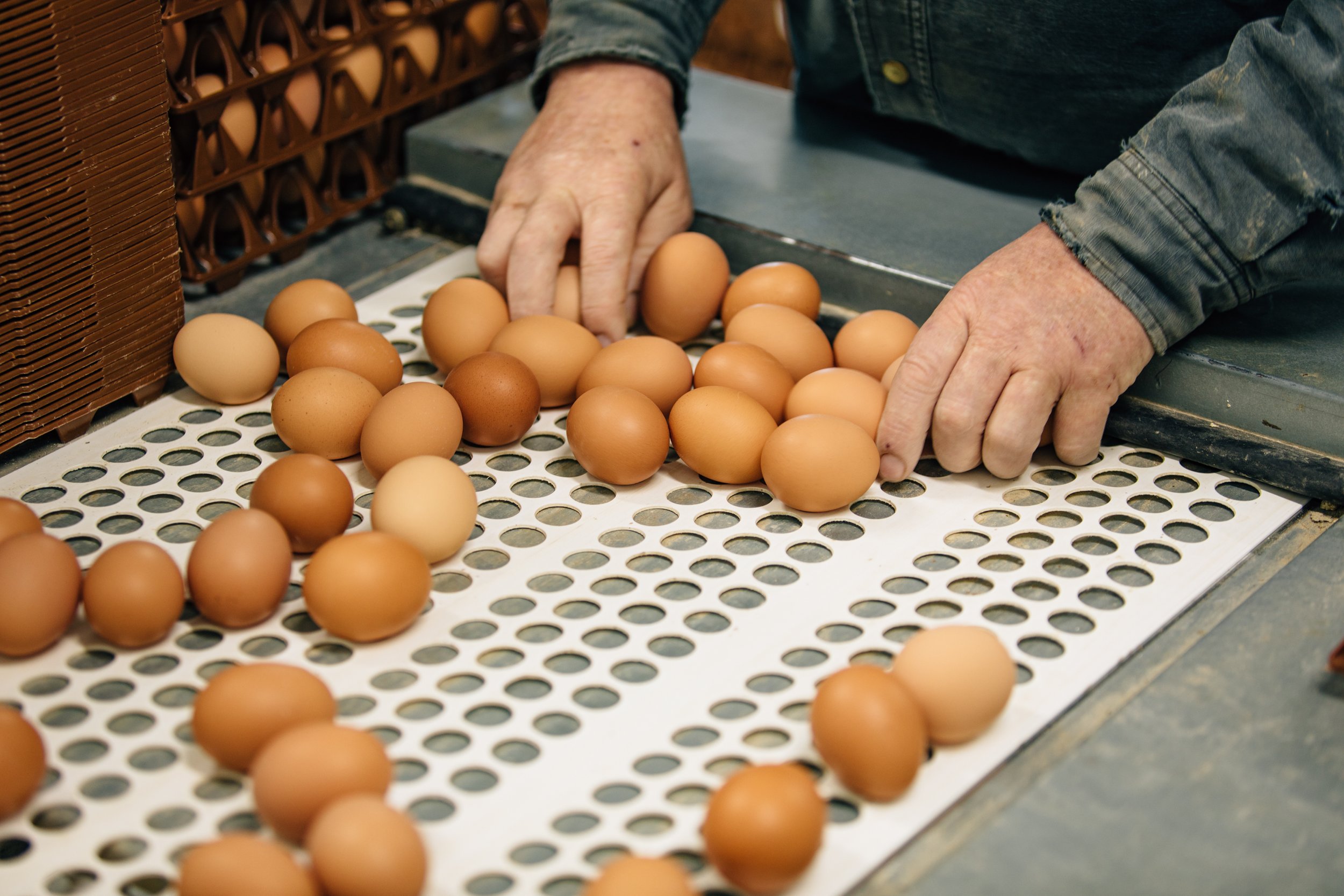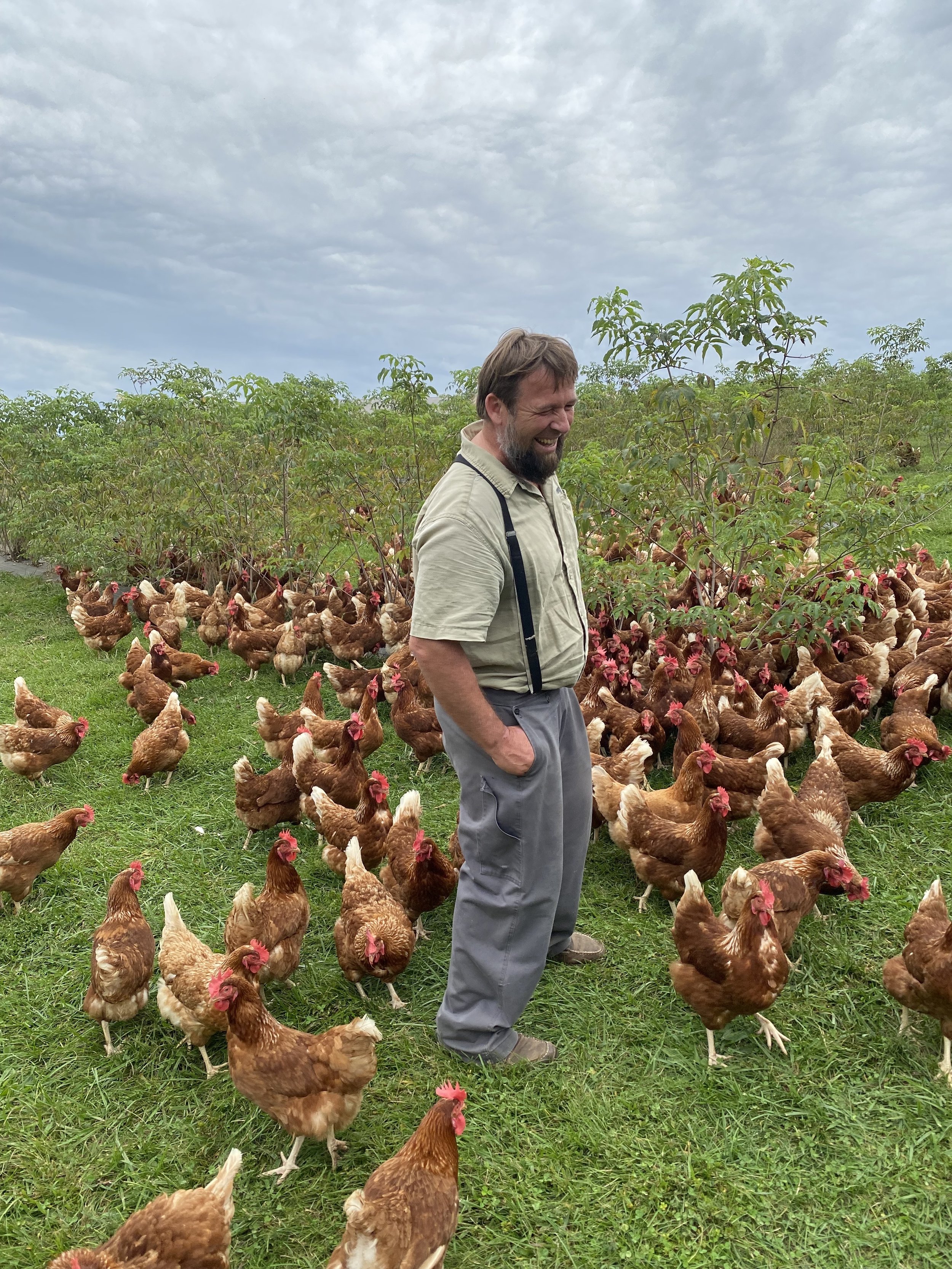
Agroforestry Creates Benefits from Farm to Table
Growing Practices Through Collaboration
Agroforestry creates a multitude of benefits for farmers, animals, crops and consumers. However, finding the funding and technical support to begin can be a chicken & egg problem.
Creating a program that puts farmers first
Propagate and Handsome Brook Farms solved this together by creating a program that puts farmers first, customizing solutions to their needs while being able to scale success. This is the story of how Handsome Brook Farms invested to support farmers, and their hens, to keep high-quality eggs on the shelves for consumers across the country.
Phase 1: Aligning with Goals
Handsome Brook Farms is a pioneer in organic, pasture-raising practices. They are dedicated to providing the highest quality eggs to consumers, and achieve that by partnering with a network of small family farms. Handsome Brook Farms prioritizes land owners and their hens’ well being by investing in the profitability and resiliency of their operations. This led them to have a conversation with Propagate about silvopasture and the many roles trees and shrubs could play in expanding on those goals.
Our team partnered with Sycamore May, Director of Sustainability & Communications at Handsome Brook Farms. She was aware of agroforestry through her own curiosity, and had some exposure to the concepts in practice through World Wide Opportunities on Organic Farms (WWOOFing) experiences. Excited by the inter-related benefits we could create, Propagate worked with Sycamore to design a program that could support Handsome Brook Farm’s growers and hens, while also making progress towards the company’s sustainability goals of incorporating regenerative practices.
Program Goals
🥚 Quality nutrition
🐔 Hen well-being
🧑🌾 Farm profitability and resilience
♻️ Progress toward sustainability commitments

Phase 2: Farm Planning
The team at Handsome Brook Farms knew how important it was to get buy-in from their partner farmers on any new practices. They also wanted to be able to work at-scale with their network of farms across 10 states. With clear program goals established, Sycamore introduced the Propagate team to individual farmers to better understand their unique needs and challenges. Propagate then worked in concert to discuss particular crops and practices.
“
I didn’t know of any other organizations familiar with agroforestry for pasture-raised layer hen production at the scale of our operation. Propagate worked with our farmers in a way that provided value-added products, and potential to scale these projects across our network with interested farmers, which was (and remains) a priority.
— Sycamore May, Handsome Brook Farms
The Propagate team met Alvin in 2019 and learned more about his farm in Kentucky. He shared that his hens were reluctant to leave the barn, leading him to look for ways to encourage time spent outside. After all, what value is a pasture if it’s not being used? Our team started by building a farm plan in Overyield, our proprietary agroforestry planning software, in combination with on-the-ground measurements to present a few options based on the farm’s soil composition, climate, and goals.
Alvin didn’t have much experience with trees, but was open to experimenting. We discussed crops that were suitable, easy to manage, and prioritized fodder and shade for the hens. Elderberries stood out as a strong option for a few reasons. They are relatively easy to plant and manage, making them approachable for those new to agroforestry. Elderberry checked all the boxes for the hens, providing additional feed, shade, and antibacterial properties which benefit their health. On top of all that, it made economic sense for Alvin. Projections showed a growing market for elderberries in the U.S., providing a new stream of potential income to support his bottom line.
Selecting a Pilot: Alvin’s Farm

Phase 3: Planting & Management Training
Planting began in 2020, working in phases based on initial observations, and concluded in 2022. Throughout those two years, our team worked with Alvin to constantly learn and improve on our methods for planting trees in and around chickens. Ultimately, separate fields for elderberries and chestnuts were planted, and other areas were planted with a diverse mix of persimmons, mulberries, and willows for the wetter areas.
It took some time for the trees to provide enough shade for the chickens to feel safe and develop new behaviors, but it wasn’t too long before the hens were out in the pasture. Alvin was pleased to see the hens scratching underneath the elderberries. “They go along each row and congregate under the plants” he said, noting that there was an increase in health among the flock.
Each planting built upon prior learning and provided valuable information about the level of care required for different tree species, as well as what species the chickens preferred — underscoring the importance of taking a long view for organizations looking to develop programs with their producers.
Ensuring Success
Early Results: Happy Hens, Healthy Eggs
It’s important to note that tree planting is labor intensive, seasonal, and requires specific skills. Propagate was able to help provide planting and management services that put trees in the ground quickly and successfully to ensure survival. All Propagate projects come with an 80% survival guarantee, but the rate for projects planted to date is typically much higher. This was a differentiating factor for Handsome Brook Farms as they made the decision to partner with us.

Until we began on-farm projects with HBF growers and Propagate, I did not realize the amount of planning, maintenance, and ‘meeting in the middle’ with farmers was needed to make these projects a success.
“
— Sycamore May, Handsome Brook Farms
How to Get Started
Looking ahead, our team is excited to spread the word about what trees and shrubs can do for hens in silvopasture systems. The practice is growing across the country, but additional education and funding will be required to support farms to transition.
For companies interested in offering similar programs to their producers, or farms interested in the potential for similar practices on their land, contact us to discuss what is possible.
You can also learn more about funding options available to support practices like this here: Financing Solutions.


















